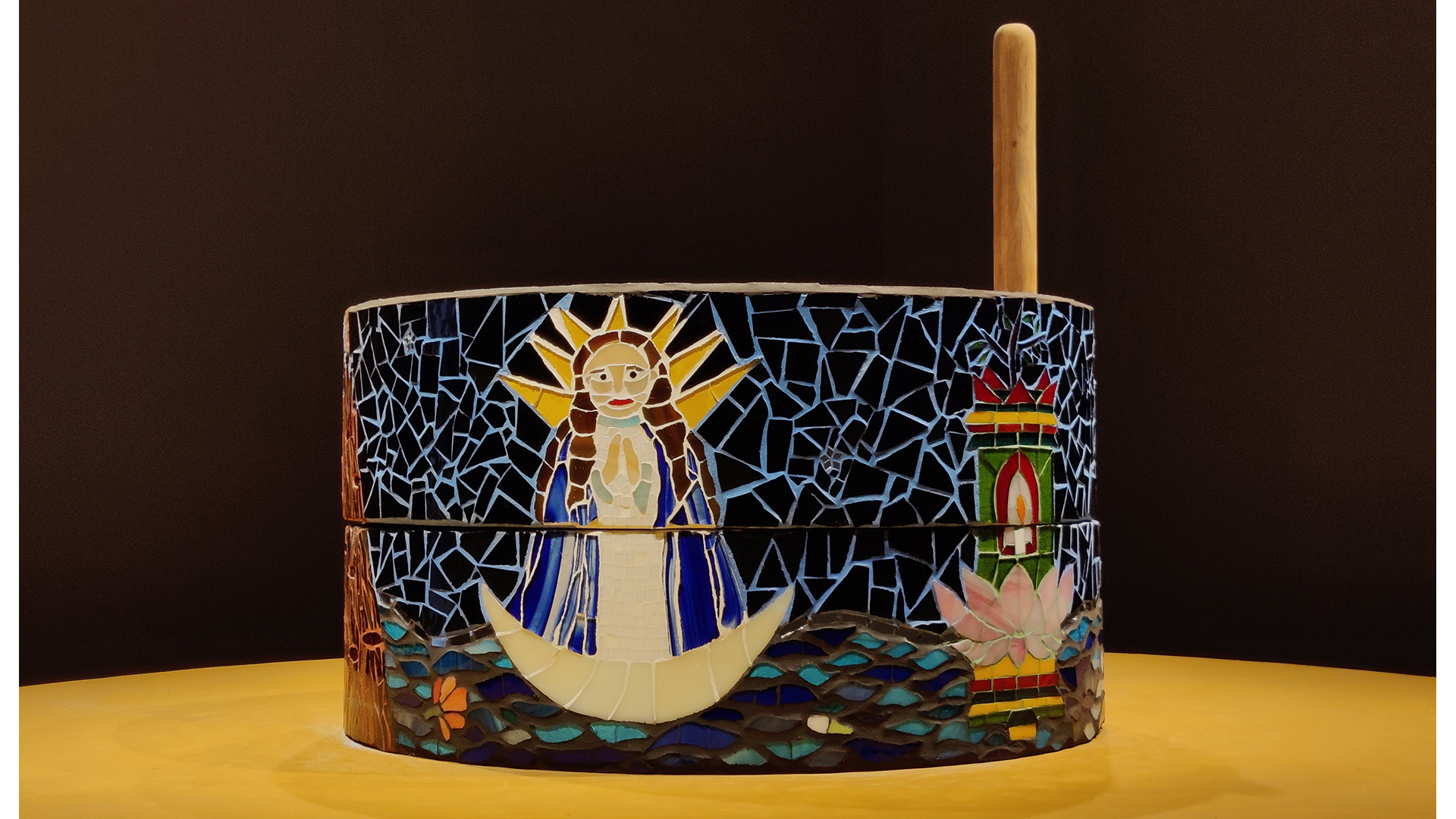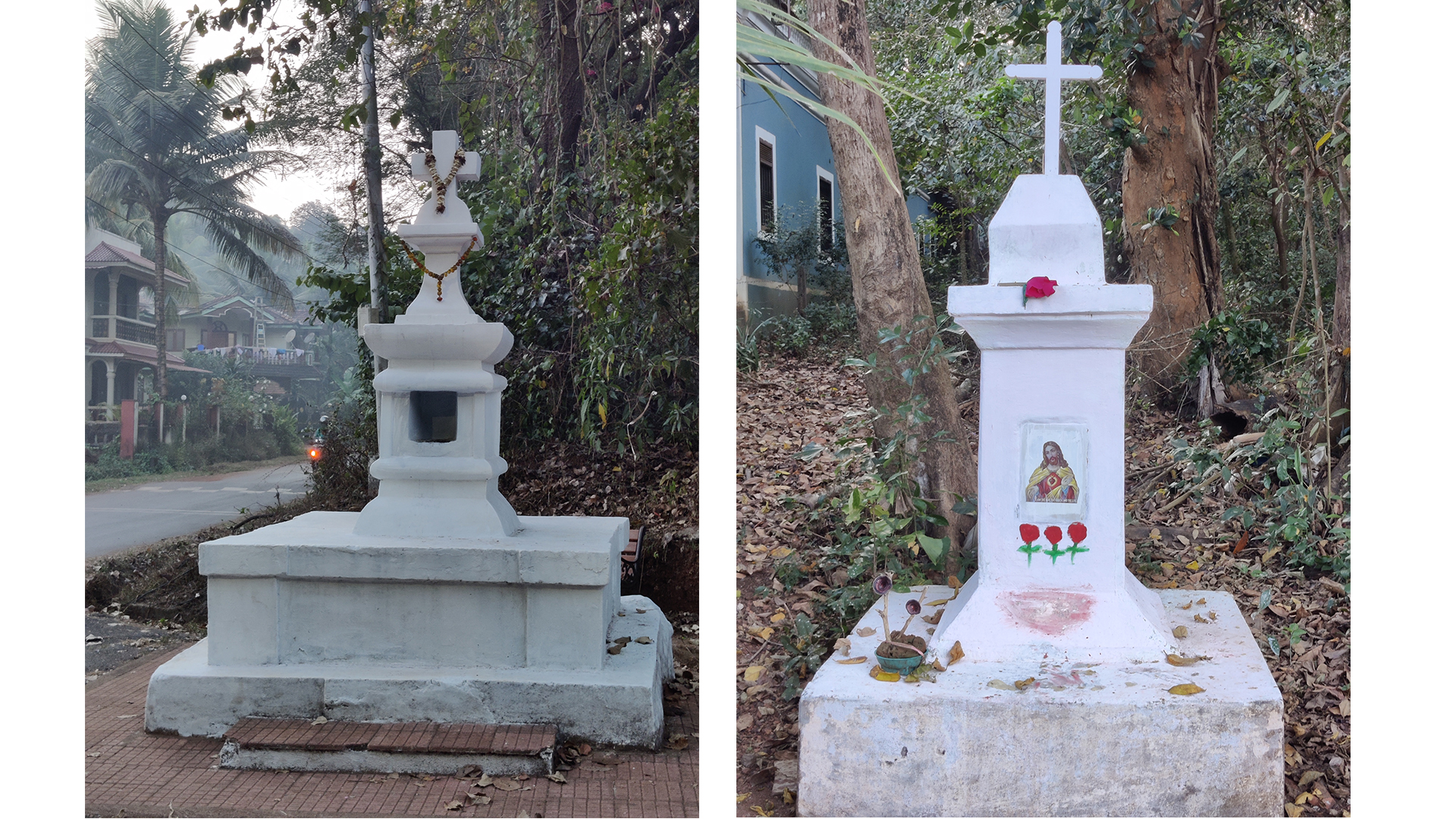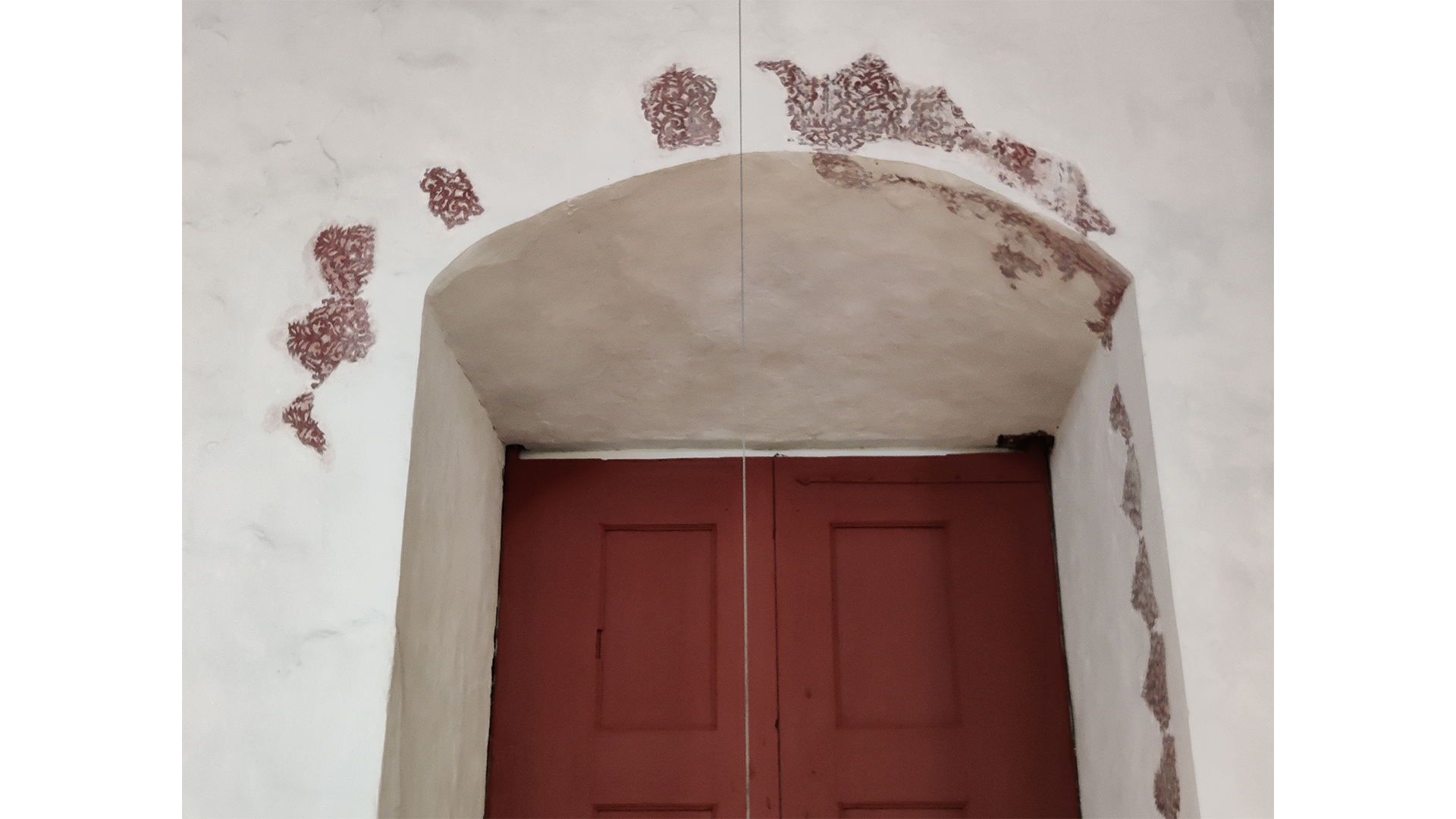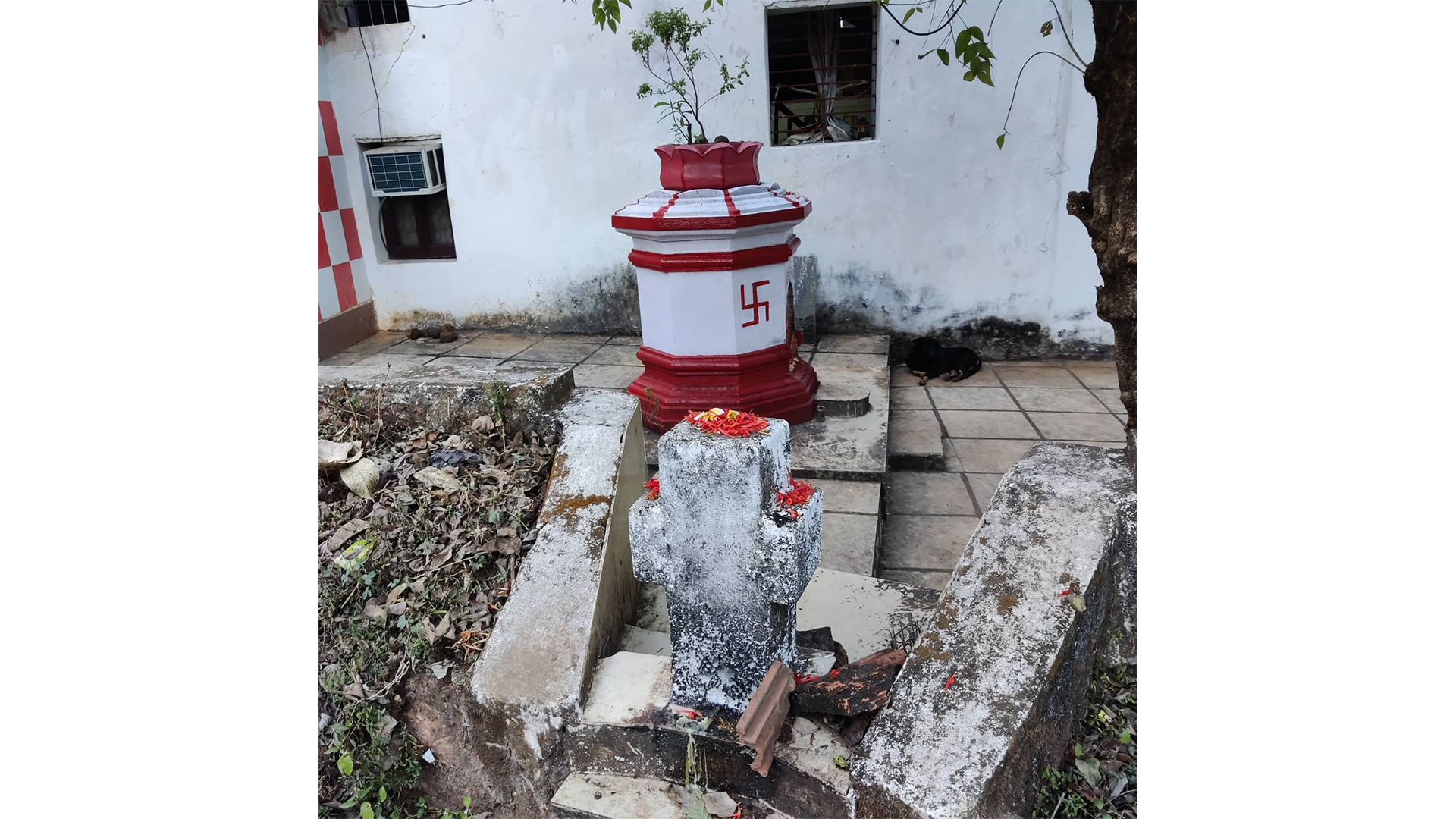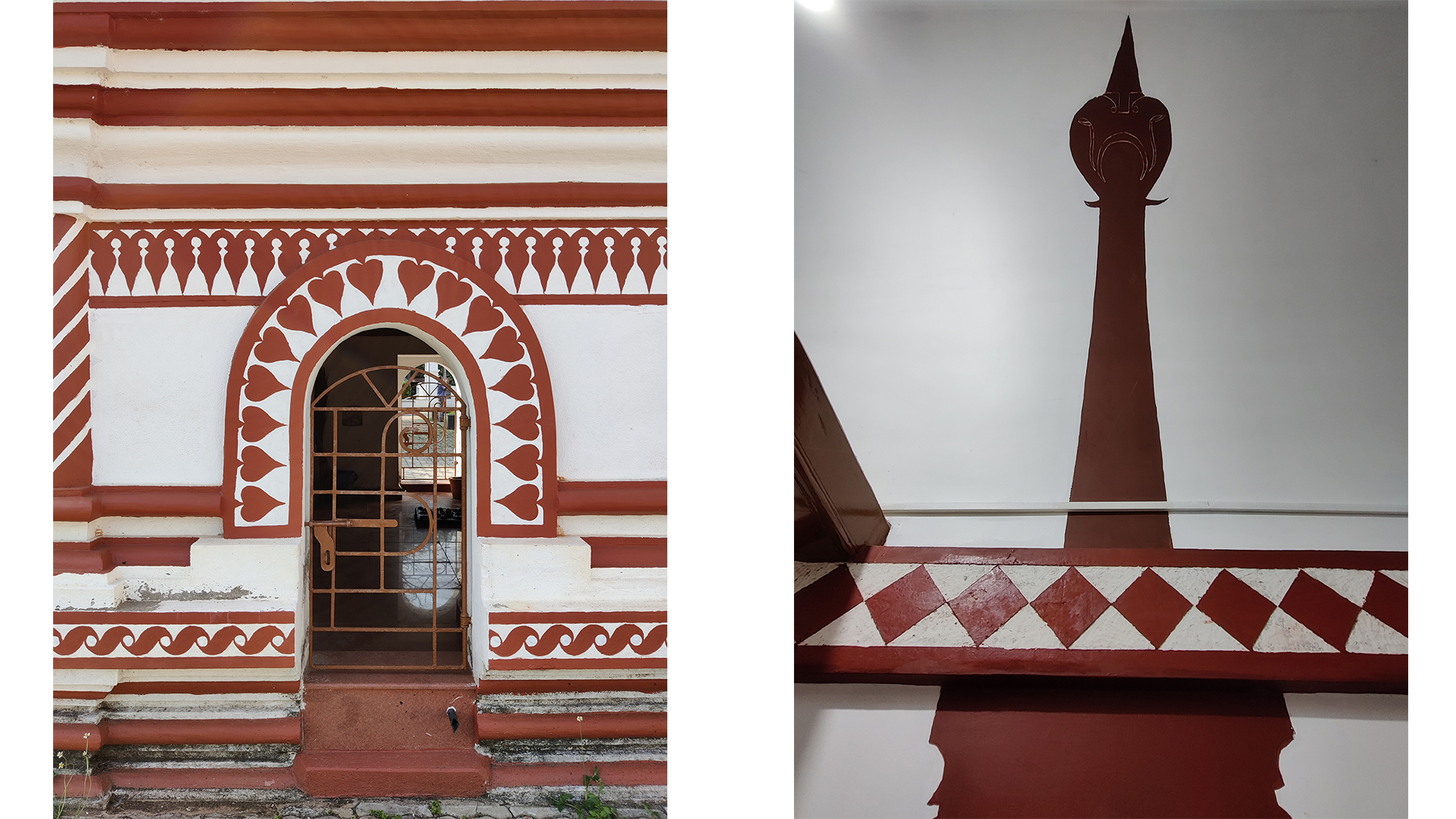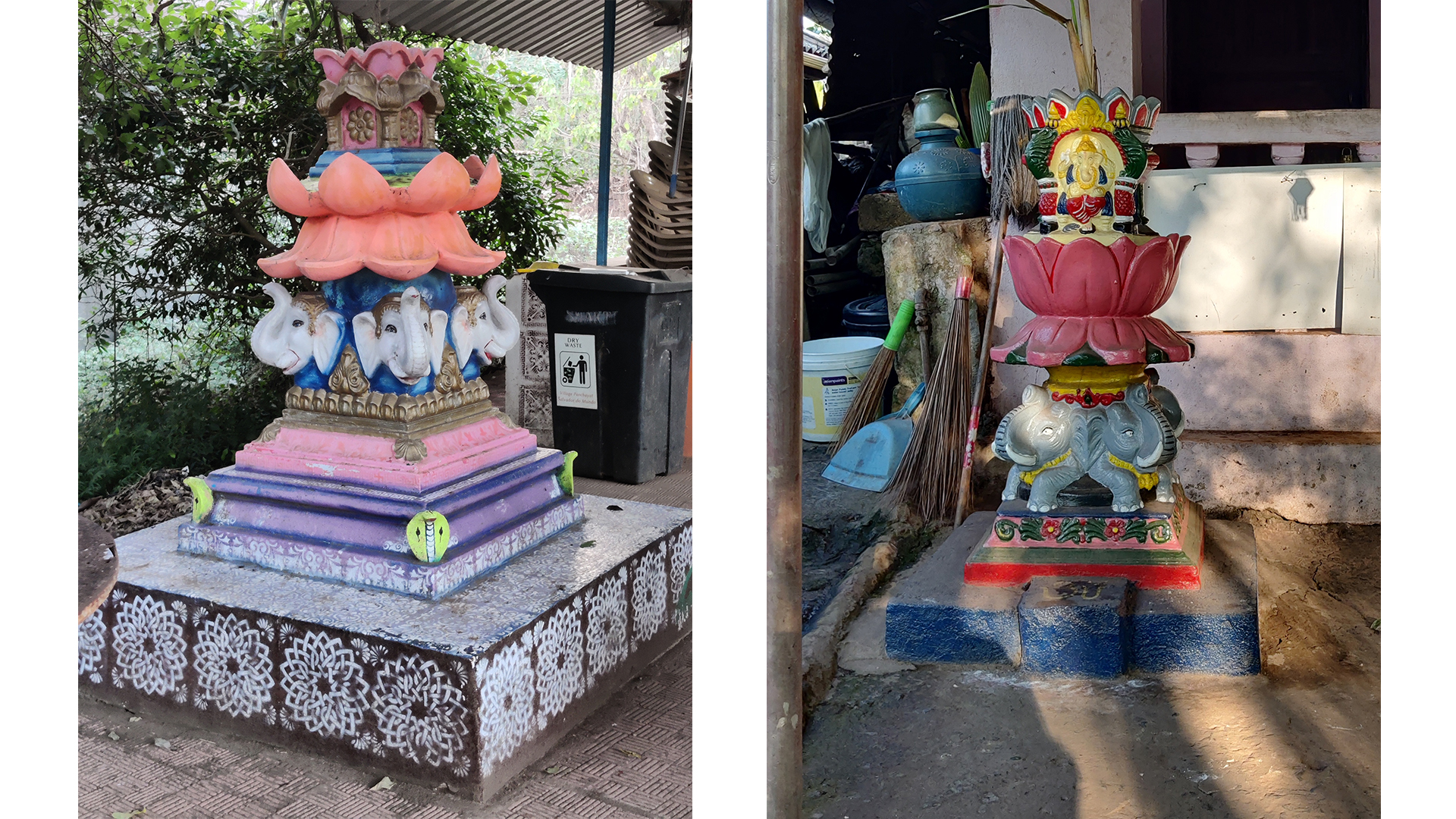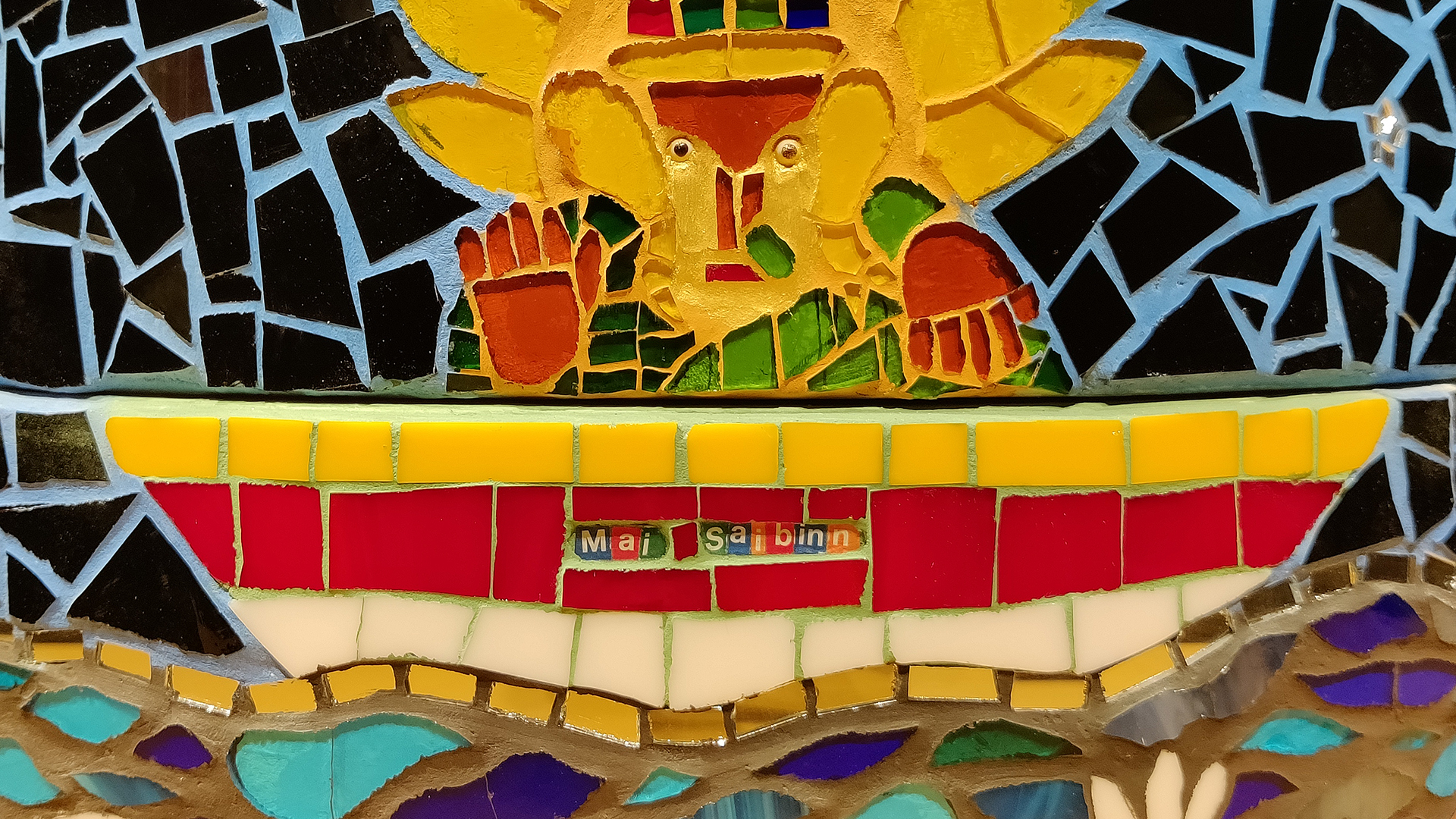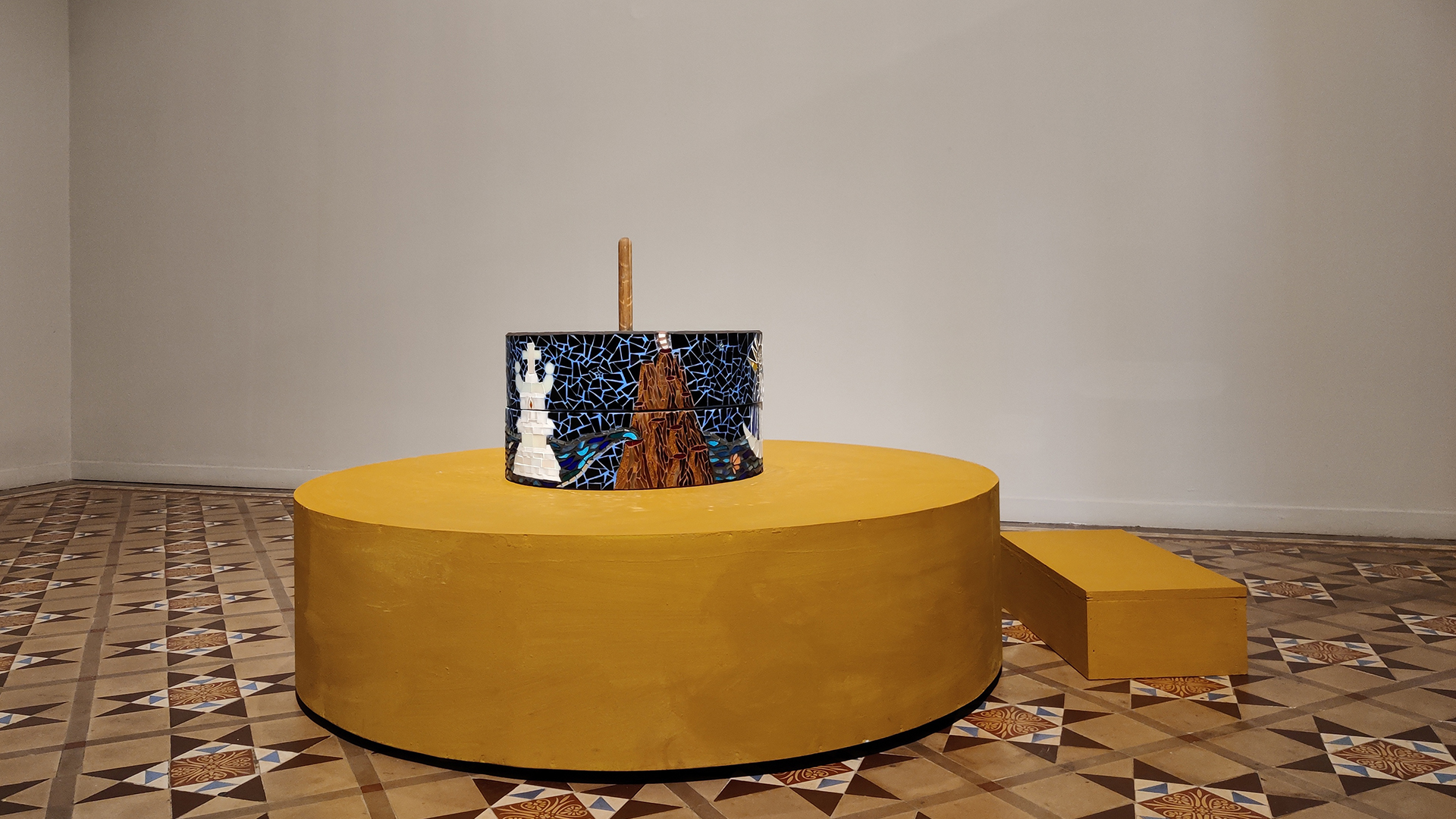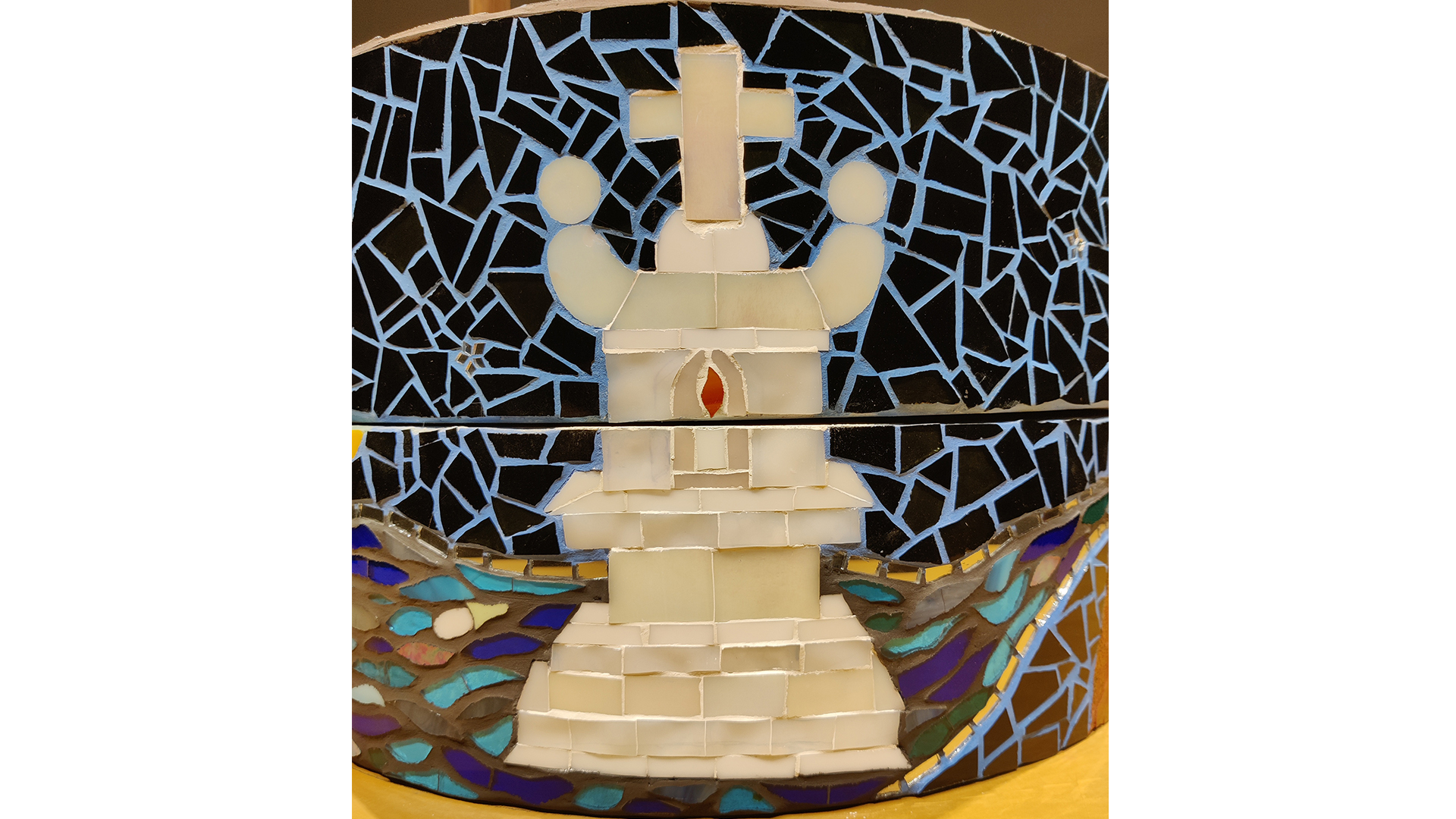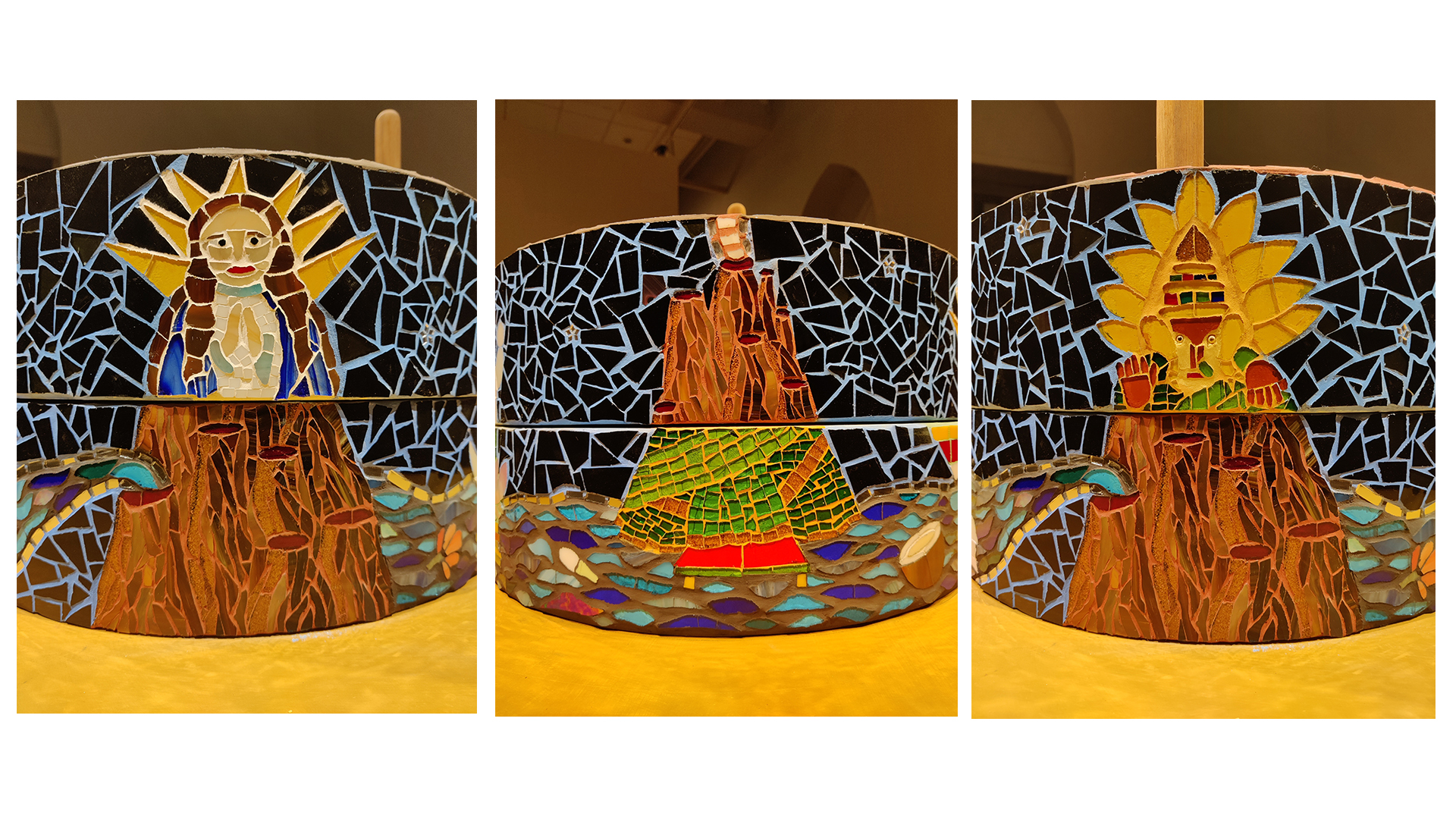A Tale Of Two Sisters
2020 | SCULPTURAL OBJECT WITH SOUND
18X10 INCHES – WOOD, GLASS MOSAIC, GROUT, TEXT, SOUND (3 MINUTE LOOP)
Using the form of the grinding stone to churn together religious iconography, folk literature, songs, myths, religious and cultural practices, testimonies, historical data and academic writing from Goa, this work looks at the syncretic nature of worship in Goa and the connections between two of its most prominent female deities, Mother Mary and Shantadurga.
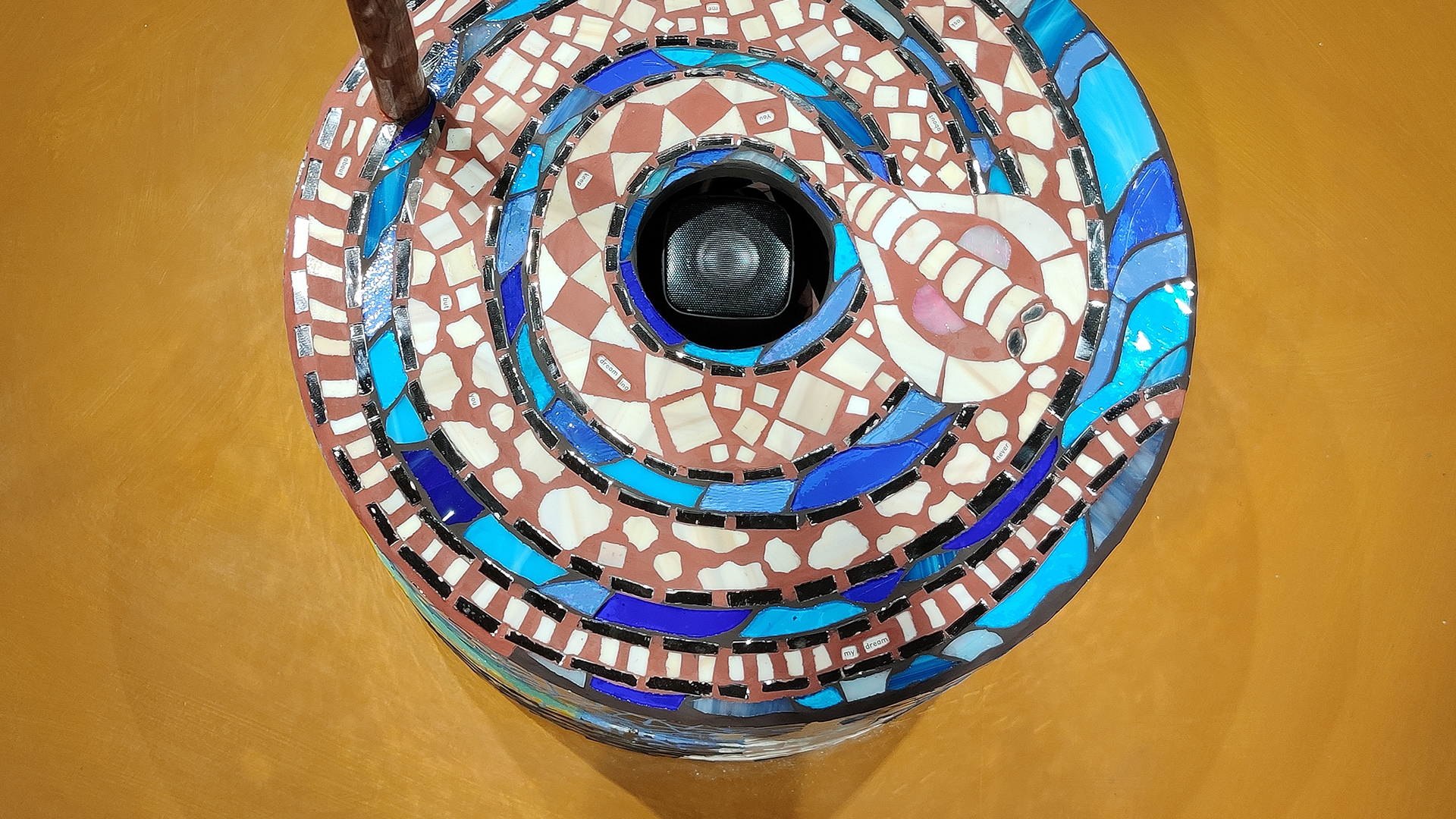
Once upon a time, a young brother sets out of his home with his seven sisters to drop each one of them back to their husband’s homes. The journey takes a long time and he is finally ready to return home. But the sisters have already begun to miss their mother’s home and one by one they start to cry. They cry so much that their tears make the rivers swell up and flood. The brother gets caught in the flood and endlessly swirls in the river, trying hard not to drown. The only way he can save himself is if the flood subsides. The only way the flood will subside is if his sisters stop crying. The only way his sisters will stop crying is if the brother goes to pick them up from their husband’s homes. Stuck in this deadlock situation since the beginning of time, all of them have lost touch with each other and the story is forgotten. But the grinding stone, an age-old confidant of young women, remembers… and If you listen carefully it will tell you how sisters are after all, sisters.
The grinding stone, or the dantem as it is known in Konkani, was often handled by the youngest daughter in law, the newly married bride. She sat grinding all day and as she laboured, she confided in the stone. It is no surprise then that oviyos, or the grinding songs, are mostly about pining for home and reuniting with brothers. I wondered why the girls didn’t sing much for their sisters.
Speaking of sisters who never got to meet, I began to think of the two most prominent female goddesses in Goa – Mother Mary and Shantadurga. Some say that Mother Mary is simply a version of Shantadurga. Maybe that’s why they are both called by the same name, “saibini”. Others say that Mother Mary, or rather Milagres Saibinn of Mapusa is one of seven sister deities who came to Goa along with their brother. Maybe that’s why coconuts and flowers are sent back and forth the temple and church during their feasts. But who was this brother, and where was their home? There is talk of an origin, older than the pyramids of Gaza, sateri, the sacred termite mound, the home of snakes…
Churning together folk literature, songs, myths, religious and cultural practices, testimonies, historical data, academic writing, theories and musings from Goa, this work uses the form of the daantey or the grinding stone, to explore the syncretic nature of goddess worship across Hindu and Catholic traditions in Goa.
Special thanks to Heta Pandit, author of “Grinding Stories: Songs from Goa” & Robert Newman, author of “Goan Anthropology: Mothers, Miracles and Mythology”.
This work was made as part of the Catalyst project grants 2020 awarded by Goa Open Arts and culminated with a group show called ‘Retellings’ at the Sunaparanta Goa Centre for the Arts.
View the Catalogue here
